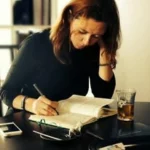When Bordeaux estates launch artistic endeavors, they nearly always seek some sort of
resonance with the château—typically with its owners, its history or its values. Nowhere is that resonance more explicit than at Château de Ferrand.
Established in 1702, Ferrand has changed hands only once. That was in 1978, when it was purchased by Baron Bich, founder of Bic pens. The Baron passed away in 1994, and since 2005 Ferrand has been run by his daughter Pauline and her husband, Philippe Chandon-Moët. When they took the reins, the couple’s ambition was to move the estate into the future while preserving its illustrious past.
As at many other châteaux, modernization efforts began in the vineyard followed by updates to winemaking facilities and cellars. These investments soon paid off; in 2012 Ferrand attained the coveted status of grand cru classé. The owners then embarked on a massive transformation of château, calling upon the talents of Patrick Jouin, one of France’s most celebrated designers, and his partner, architect Sanjit Manku.
In 2019, Ferrand re-opened its doors, welcoming visitors with custom-made interiors and furnishings that featured natural materials and clean lines. Fresh understated elegance became the hallmark of guest rooms, reception areas and tasting rooms, with artful and amusing tributes to the Baron sprinkled throughout.
Shortly after entering, visitors can’t help but smile when they see “Capuchon Mordu” (2021), a nine-foot-tall Bic pen top that appears to have been chewed on by its young owner. For sculptor Julien Gudéa, it was a fond homage to his elementary-school days.
In the tasting room, guests can admire the exquisitely detailed mural depicting the landscapes surrounding the château. The work of artist Alexandre Doucin, the 670-square-foot monochrome fresco required eight Bic fine-point pens and seven months of work. And hanging from the gallery ceiling is a metal sculpture from Belgian artist Michel François’s “Scribble” series (2011). “Scribble” transposes doodles made with Bic ballpoints into three-dimensional works made of copper tubes painted with ink extracted from hundreds of Bic pens.
Since their introduction in 1950, Bic products have inspired these and innumerable other international artists to create drawings, sculptures and installations, prompting the company and the Baron’s family to progressively acquire 250 such works. The resulting Bic Contemporary Art Collection, which participates in art exhibitions and competitions, has indefinitely loaned some 30 pieces to the château for the delightful “Bic Art à Ferrand” experience.



